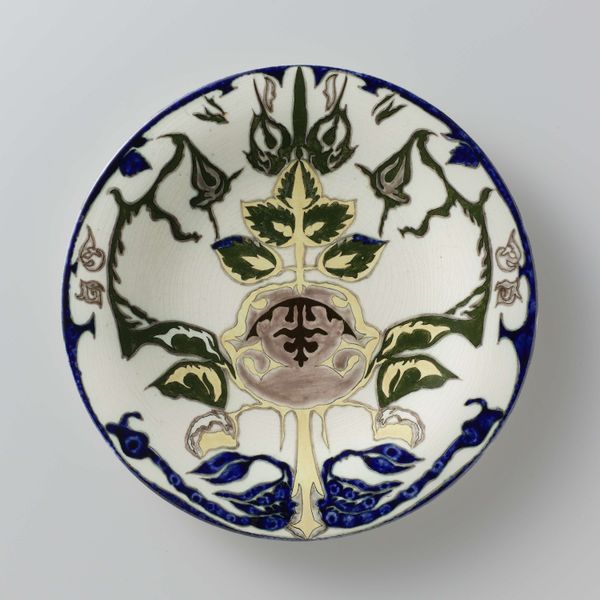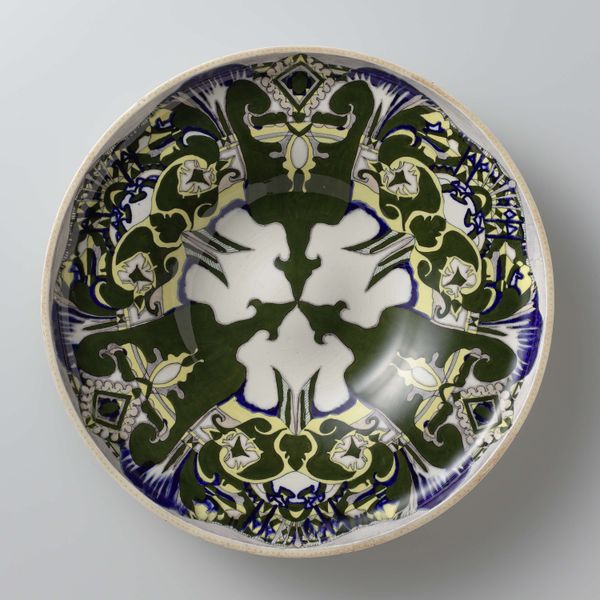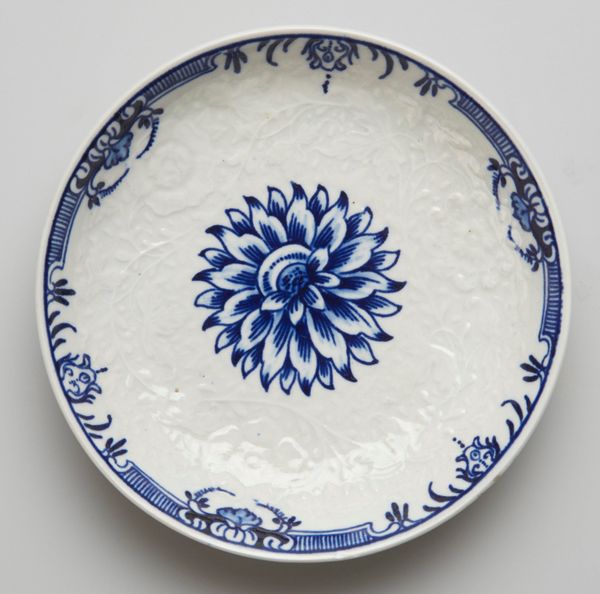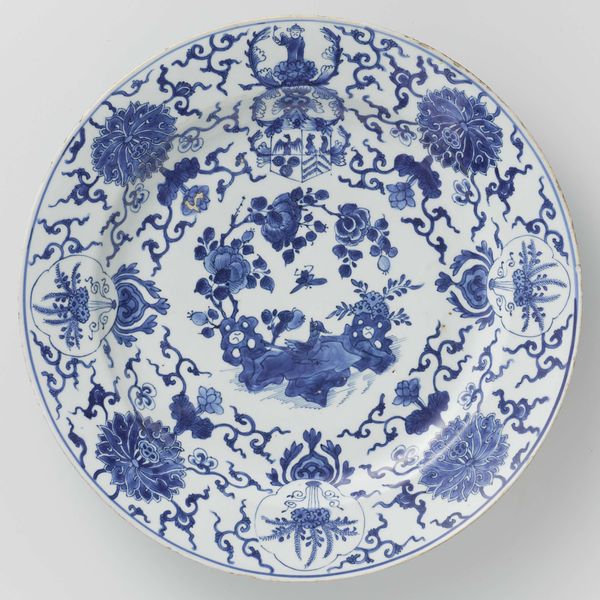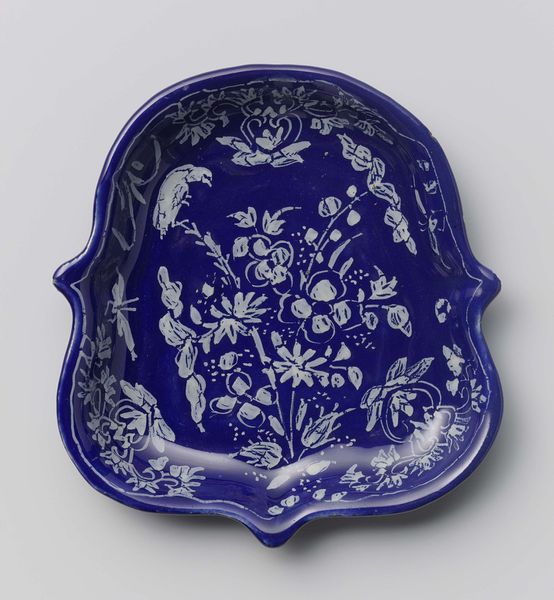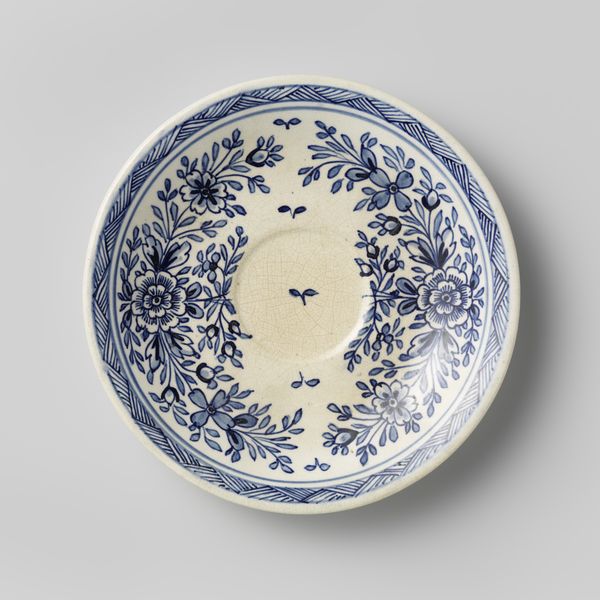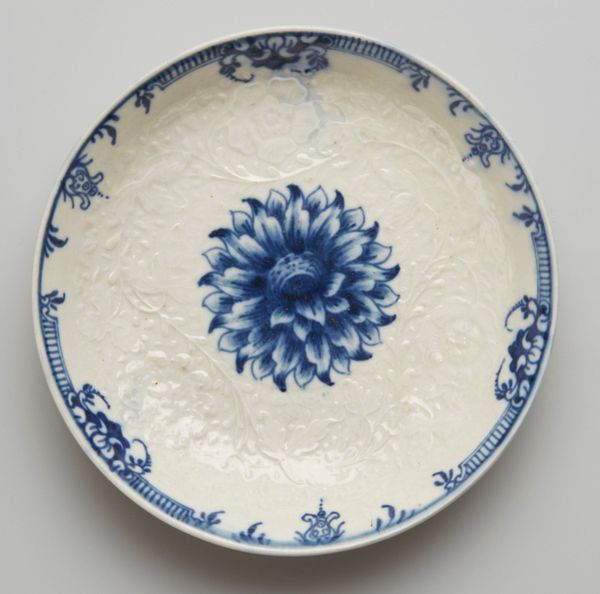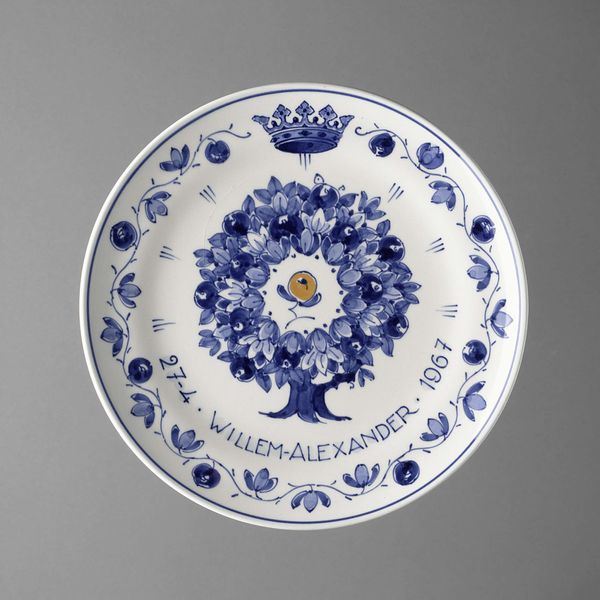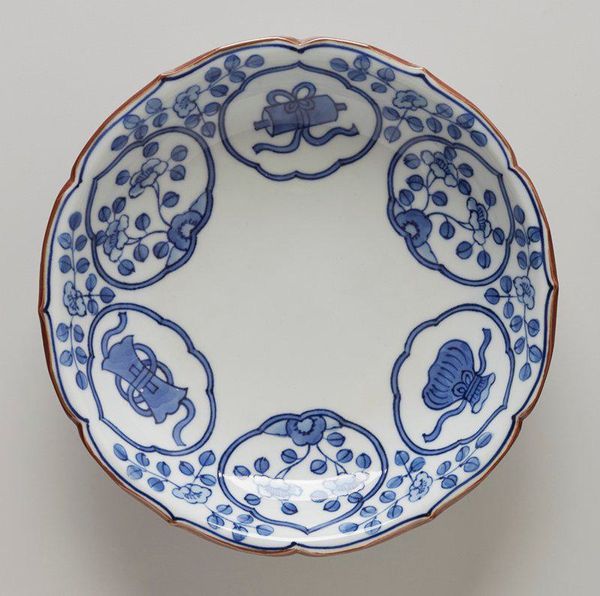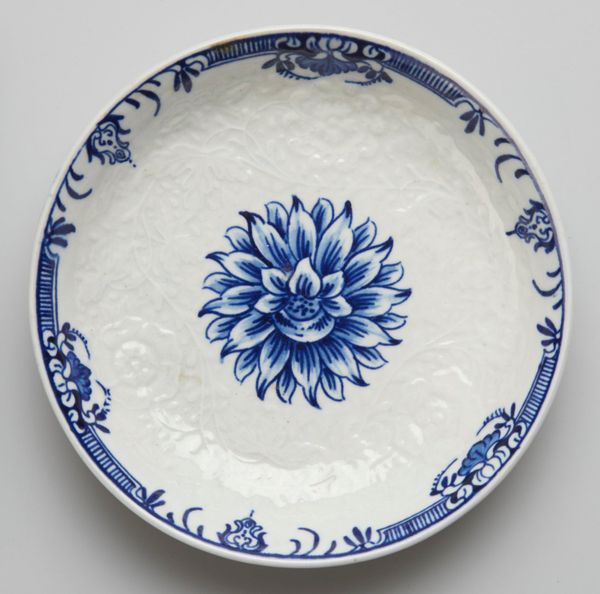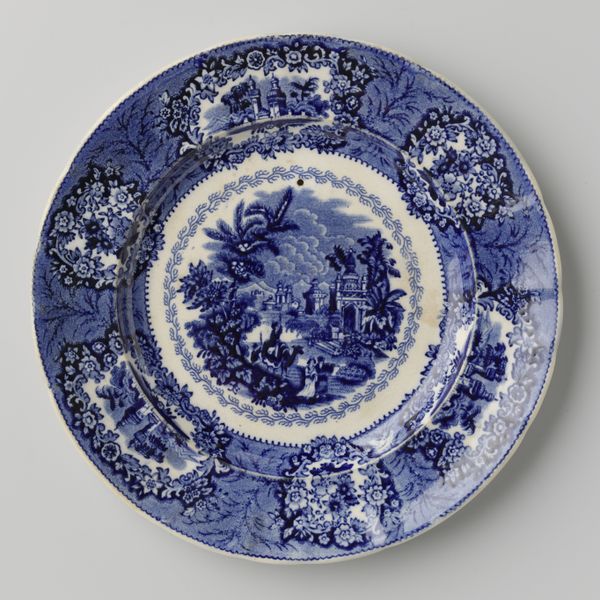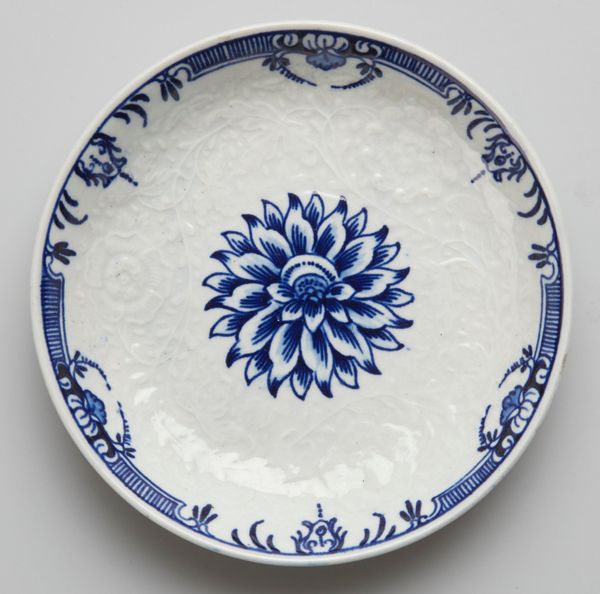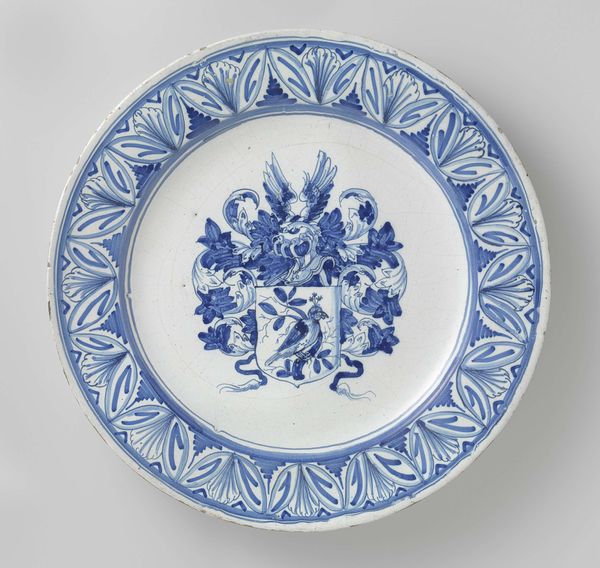
Wandbord met driedelig symmetrisch vegetatief ornament 1888
0:00
0:00
ceramic
#
art-nouveau
#
ceramic
#
stoneware
#
ceramic
#
decorative-art
Dimensions: height 2.5 cm, diameter 27.7 cm
Copyright: Rijks Museum: Open Domain
Curator: This object, a stoneware wall plate from 1888 made at the N.V. Haagsche Plateelfabriek Rozenburg, presents a captivating example of late 19th-century ceramic design. Editor: It's beautiful, with the deep blue background and intricate symmetrical decoration. The whole piece seems very considered. What can you tell me about it? Curator: From a materialist perspective, I'm immediately drawn to the production processes. Stoneware requires high firing temperatures. The labor involved in shaping, glazing, and decorating such a piece, especially considering the precision of the vegetal ornamentation, suggests a dedicated and skilled workforce. Think about the social hierarchy implied in these processes, the division of labour in the Rozenburg factory, and the consumption patterns it catered to. Editor: So, it’s not just about the final object, but the conditions that allowed it to be made? Curator: Precisely. How does this stoneware plate reflect the broader context of 19th-century industrial production and the rise of consumer culture? The materials themselves, the specific blue glaze employed – what does that tell us about the resources available to Rozenburg, the chemistry involved? Were these materials locally sourced or imported? Editor: That’s a fascinating way to think about it. It challenges me to look beyond just the visual aspects. Curator: Indeed. And the Art Nouveau style evident here – how does it connect to the broader social anxieties of the time? Was this intricate floral pattern a retreat from industrialization, or an attempt to integrate nature within a newly industrialized society? Editor: I hadn't considered those layers of meaning before. I see how understanding the context gives the plate a new depth. Curator: It reframes our appreciation of what's important about this object. Rather than aesthetic enjoyment alone, we're also recognizing the socioeconomic conditions embedded in its production and its relationship to nature and industrial production in Dutch society at the time. Editor: Thanks for opening my eyes to that broader understanding of how labor and materials play a role. Curator: You’re welcome!
Comments
No comments
Be the first to comment and join the conversation on the ultimate creative platform.
